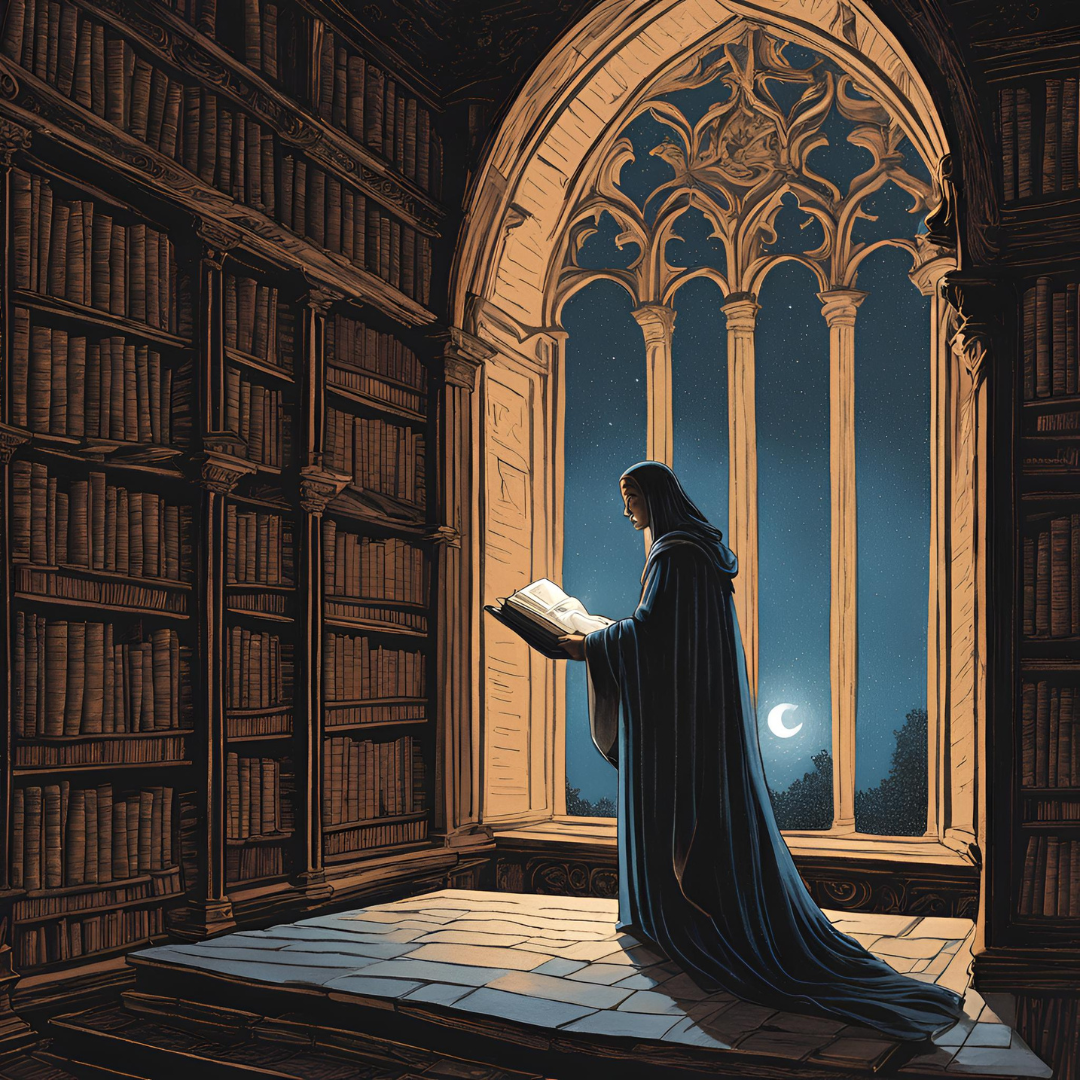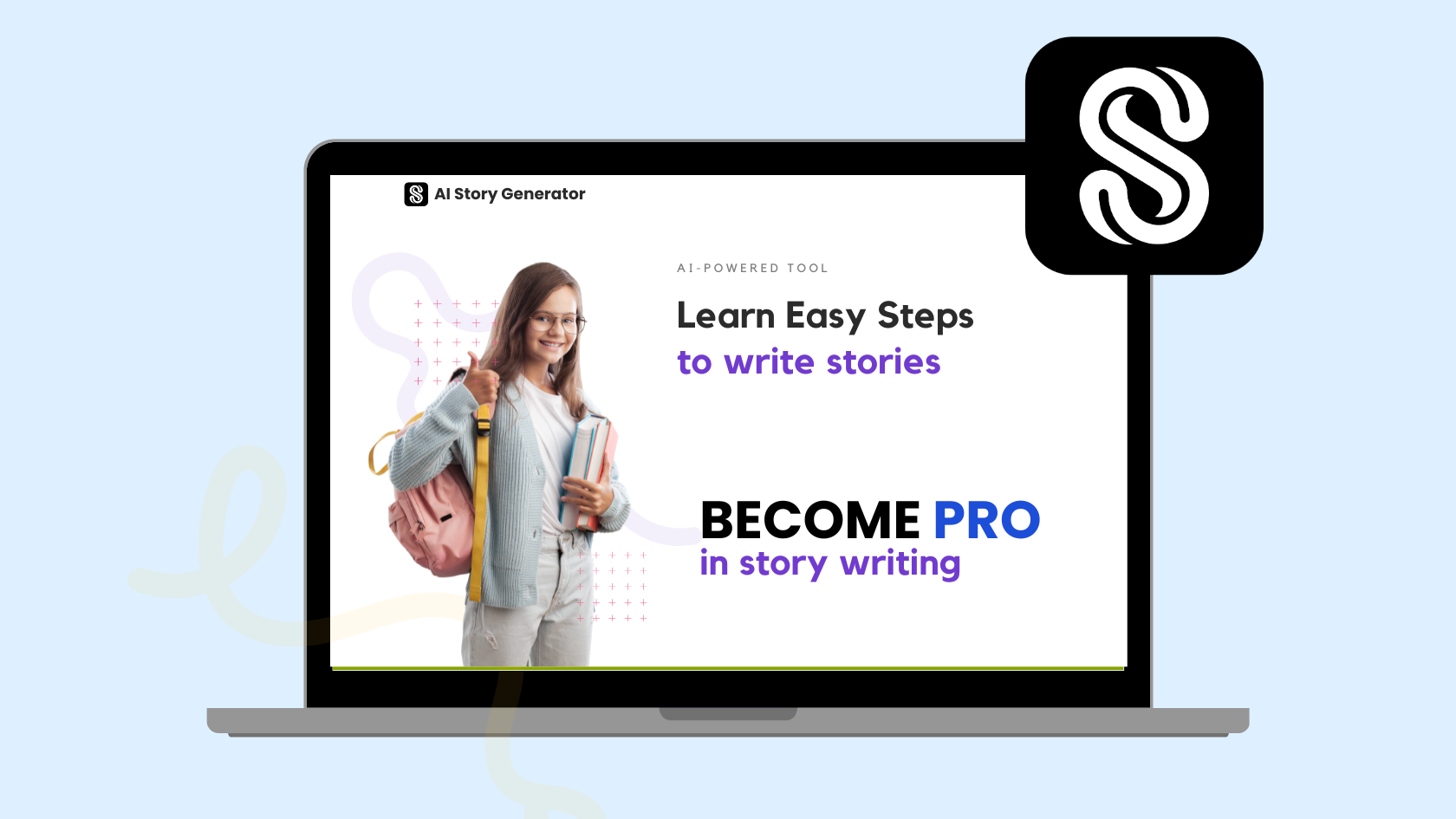Are you looking to improve your story writing and keep your readers read your stories from start to finish?
Whether you’re an professional story writer or just want to start your storytelling skills, becoming perfect in story writing is quite challenging.
But don’t worry, we’ve got you covered! In this article, we’ll walk you through 5 proven techniques to make your creative story writing better.
From crafting captivating characters to building suspense, these tips will help elevate your stories and make them more engaging and memorable. Let’s dive in and transform your story writing today!
Technique #1: Read your Reader’s Mind
Reading your Reader’s Mind is a storytelling technique that involves anticipating your reader’s thoughts, questions, and expectations as they progress through your story. By predicting what your audience might be thinking, you can shape your narrative to keep them engaged, avoid confusion, and deliver satisfying twists.

This approach is useful because it helps you build a deeper connection with your readers, making them feel like the story was written just for them.
How to Use This Technique Effectively?
- Put Yourself in the Reader’s Shoes
Before you start writing, imagine you are the reader experiencing your story for the first time.
Ask yourself: What would I want to happen next? What information might I need to fully understand this scene? By adopting the reader’s perspective, you can ensure your story flows smoothly and that no critical details are left out.
- Predict Questions and Answer Them
As readers move through your story, they’ll naturally have questions about the plot, characters, or setting. Try to anticipate these questions and provide answers at the right time.
For example, if you introduce a mysterious character, your readers might wonder: Who are they, and what do they want? Instead of leaving them guessing for too long, drop subtle hints or backstory pieces to keep their curiosity satisfied without giving everything away too soon.
- Foreshadow Key Events
When you “read your reader’s mind,” you can set up expectations and then either meet or subvert them. For instance, if a reader expects a confrontation between two rivals, add small clues (like tense body language or side characters whispering about a potential showdown) to build anticipation.
Then, decide if you want to fulfill this expectation or take the story in a completely different direction for a surprising twist.
- Pay Attention to Pacing
Good pacing is crucial for maintaining reader engagement. If your story lingers too long in one place, readers may grow impatient. If it rushes, they might get confused.
To prevent this, read your story out loud and see if you naturally start wondering, What happens next? or Why is this scene dragging on? Adjust the pacing based on these mental cues to match your reader’s attention span.
- End Chapters with Mini-Cliffhangers
Think about what will keep your reader turning the page. By ending chapters with unanswered questions or unresolved tension, you create a psychological hook that makes them want to know what happens next.
For example, end a chapter with a character discovering a shocking piece of information—just enough to pique interest, but not enough to reveal everything.
Example:
Imagine a scene where a detective finds a hidden note in a suspect’s room. Instead of simply stating what the note says, think about what your reader would want to know at that moment: Who wrote it? What does it mean? How will it impact the investigation?
Gradually reveal these answers throughout the next scenes to keep them engaged, while always staying a step ahead in the way you feed information.
By learning to read your reader’s mind, you’re not just telling a story—you’re crafting an experience that feels intuitive and satisfying, which ultimately keeps your audience coming back for more.
Technique #2: Read as much as Possible
Reading as much as possible is a powerful technique for aspiring writers that involves immersing yourself in a wide variety of reading materials. This approach not only broadens your understanding of different writing styles and genres but also enhances your vocabulary, storytelling techniques, and creativity.

The more you read, the better equipped you are to write compelling stories, as you absorb ideas, structures, and the nuances of language from various authors.
Why It’s Useful
Reading extensively exposes you to diverse perspectives and techniques that can influence your writing. It helps you identify what works and what doesn’t, enabling you to refine your style and enhance your storytelling skills. Additionally, reading widely can spark inspiration and provide new ideas for your narratives.
How to Apply This Technique Effectively?
Set a Reading Goal
Start by setting a realistic reading goal. Aim for a specific number of books or articles to read each month. Whether it’s one book a week or a few articles daily, having a target keeps you motivated.
For example, you might decide to read one novel and two short stories each month to diversify your experience.
Explore Different Genres
Don’t limit yourself to one genre. Challenge yourself to read across various genres—fiction, non-fiction, poetry, fantasy, mystery, romance, and more. Each genre has its own conventions and styles.

By exploring them, you’ll discover new narrative techniques that can enrich your own writing. For instance, reading thrillers can teach you pacing and suspense, while poetry can enhance your appreciation for rhythm and imagery.
Join a Book Club or Reading Group
Engaging with others who share your passion for reading can be incredibly beneficial. Join a book club or online reading group where members discuss their interpretations and insights. This not only holds you accountable for your reading goals but also allows you to see how different perspectives can enhance understanding. You can gain new ideas that you might not have considered while reading alone.
Take Notes and Analyze
As you read, keep a notebook or digital document handy to jot down notes on what you like or dislike about the writing. Pay attention to character development, plot structure, and writing style.
For example, if you come across a passage that captivates you, analyze why it works—Is it the descriptive language? The emotional depth? The clever dialogue? This practice helps you internalize effective techniques you can use in your own writing.
Read with Intent
While reading, ask yourself specific questions that can help you become a more discerning reader. Consider: What makes this character relatable? How does the author build tension? By focusing on these elements, you can identify strategies that you can implement in your own writing. For instance, if you notice an author uses flashbacks effectively, experiment with this technique in your stories.
Balance Fiction and Non-Fiction
While fiction nurtures your imagination, non-fiction provides valuable insights into real-world issues, character development, and research. Reading biographies, history, or even essays can offer inspiration for story ideas and depth to your characters. For example, a historical biography might inspire a character based on real events, adding richness to your narrative.
Example
Imagine you’re writing a mystery novel. By reading classic detective stories, contemporary thrillers, and even non-fiction books about real-life investigations, you’ll gain a comprehensive understanding of the genre. You might notice how authors build suspense through red herrings or how they create tension between characters. These insights can inform your own writing, helping you craft a more engaging and intricate plot.
Technique #3: Get More Ideas using Online Tools
Get more ideas using online story ideas generator. It’s is a technique that leverages digital resources to spark creativity, overcome writer’s block, and generate fresh story concepts. Using online tools can be incredibly useful because it expands your brainstorming options beyond traditional methods and provides inspiration quickly. Whether you’re looking for character ideas, plot twists, or setting descriptions, online tools can guide your imagination, helping you craft unique stories that stand out.
Why It’s Useful
Online tools simplify the brainstorming process by offering prompts, structure, and suggestions tailored to your needs. They are especially helpful when you’re stuck or want to explore new angles. Plus, they’re accessible and easy to use, making them an ideal addition to your creative toolkit.
How to Use Online Tools Effectively:
- Use Storygenerator.io for Quick Story Ideas
Start by using tools like staging.storygenerator.io, which is specifically designed to help you generate unique story ideas. Simply input a few keywords, select your preferred genre, and let the tool present you with a variety of creative prompts.
This is a great way to jumpstart your writing if you’re struggling to come up with new concepts. Use these prompts as a foundation, then add your own twist to build a compelling narrative.
Example: Let’s say you’re interested in writing a sci-fi adventure. Storygenerator.io might suggest a prompt like, “A lone astronaut discovers a hidden civilization on a distant planet.” Use this as a starting point, then expand by imagining the culture, history, and conflicts that arise.
- Explore Additional Story Prompt Generators
While staging.storygenerator.io is a great resource, you can also use other story prompt generators to broaden your options. Websites like Plot Generator or Writing Exercises offer various prompts based on themes, genres, or specific scenarios. Having multiple sources for prompts allows you to compare ideas and refine your approach.
Tip: Combine prompts from different tools. For instance, if staging.storygenerator.io gives you a setting idea and another tool provides an interesting character concept, merge them to create a fresh and unique story outline.
- Use Character Generators for Development
Once you have a basic plot idea, use character generators to flesh out your story’s cast. Tools like Charahub or Artbreeder allow you to define traits, personalities, and even visual appearances. Storygenerator.io can also help by suggesting character roles or backgrounds that complement your plot.
How to Use It: Start by generating a few character profiles, noting details like their strengths, weaknesses, and motivations. Use these insights to guide your character’s actions and conflicts, making them more realistic and engaging.
- Use Visual Idea Boards for Settings
Visual platforms like Pinterest or Canva can serve as inspiration for your setting descriptions. Create mood boards that capture the essence of your story’s world—whether it’s a bustling urban city or an enchanted forest.
Use these visuals to generate ideas for setting descriptions on staging.storygenerator.io, making it easier to craft vivid and immersive scenes.
Tip: Pair the visual inspiration from Pinterest with the detailed setting descriptions generated by staging.storygenerator.io to create a more layered environment for your characters.
- Incorporate Word and Theme Generators
Word and theme generators offer unique phrases or motifs that can add depth to your story. Use these tools to generate overarching themes and input them into staging.storygenerator.io to see how different prompts align with your chosen concept.
Example: If you want to explore themes like “loss and redemption,” use a theme generator to gather related ideas, then enter those keywords into staging.storygenerator.io to find plot prompts that revolve around these themes.
- Explore Online Communities and Forums
Platforms like Reddit (e.g., r/WritingPrompts), Quora, or writing-specific communities like Wattpad can provide ideas through community interactions. Engage with others, share your ideas from staging.storygenerator.io, and get feedback to refine them further. This not only helps you validate your concepts but also opens up new angles you might not have considered.
Technique #4: Start writing and Revice Thoroughly
Start Writing and Revise Thoroughly is a technique that emphasizes getting your ideas down on paper and then refining them through multiple rounds of revision.
The idea is to embrace the writing process as a two-step journey: first, by allowing yourself the freedom to write without constraints, and second, by polishing your draft into a coherent, engaging piece. This method is useful because it prevents perfectionism from stalling your progress, allowing you to build momentum and then fine-tune your work into something truly impactful.
Why It’s Important
When you separate the writing and editing stages, you reduce the pressure to “get it right” on the first try. This approach not only helps you complete your story faster but also gives you the flexibility to explore different ideas and directions without judgment. By revising thoroughly, you can refine your story’s structure, fix inconsistencies, and enhance the overall readability.
How to Apply This Technique Effectively:
- Create a Rough Draft Without Overthinking
Start by putting your thoughts on paper without worrying about grammar, sentence structure, or even plot holes. The goal is to capture your main ideas and follow your creative instincts. If you’re unsure where to start, use a writing prompt from a tool like staging.storygenerator.io to spark your imagination.
Tip: Set a timer for 20-30 minutes and challenge yourself to write as much as possible without stopping. Ignore your inner critic and focus solely on getting your story’s framework in place. For example, if you’re writing a short story about a detective solving a mystery, just write the scenes as they come to mind, even if they’re out of order.
- Take a Break After Finishing the Draft
Once you’ve completed your rough draft, set it aside for a day or two. This break gives you distance from the material and allows you to return with fresh eyes. During this time, avoid the urge to peek at the draft—let your mind reset.
Why It Works: Coming back to your story with a clear mind helps you spot inconsistencies, awkward phrasing, and areas that need improvement more easily than if you dive straight into revising.
- Review the Big Picture First
When you’re ready to start revising, focus on the big picture elements before getting into smaller details. Ask yourself:
- Does the plot make sense, and does it have a clear beginning, middle, and end?
- Are the character motivations and conflicts believable?
- Is the pacing appropriate, or are there sections that drag or feel rushed?
For example, if your mystery story’s middle section feels slow, consider cutting out filler scenes or adding a subplot to keep the tension high. Make notes on what needs restructuring or rewriting.
- Revise for Flow and Consistency
After tackling the overall structure, focus on ensuring that scenes flow logically from one to the next. Check for consistency in your characters’ behaviors, settings, and timelines. Keep an eye out for contradictions or elements that don’t add up.
Tip: Use a color-coding system to highlight different types of inconsistencies. For example, use red for plot holes, blue for character inconsistencies, and green for pacing issues. This visual aid can make your revision process smoother.
- Polish Sentence by Sentence
Now it’s time to dig into the smaller details. Go through your draft sentence by sentence to refine the language, fix awkward phrasing, and eliminate redundancies.
Make sure your word choices are precise and that your sentences are varied in structure.
Example: Instead of saying, “The detective was very angry,” try: “The detective’s eyes narrowed, and his hands tightened into fists.” This not only shows the emotion more vividly but also enhances the reader’s engagement.
- Check for Grammar, Punctuation, and Spelling
Once you’re satisfied with the content, focus on correcting grammar, punctuation, and spelling errors. Tools like Grammarly or Hemingway Editor can help you catch mistakes and improve readability. Even though online editors are useful, always read through your text manually to ensure it flows naturally.
Tip: Read your story out loud to catch awkward phrasing or rhythm issues that might not be obvious when reading silently.
- Get Feedback from Others
After completing a few rounds of revision, share your story with a trusted friend, critique partner, or online writing community. Getting an outside perspective can highlight areas that you might have overlooked. Be open to constructive criticism, and use it to guide your final revisions.
How to Use It: Ask specific questions when seeking feedback, such as, “Does the protagonist’s motivation feel believable?” or “Did the twist feel surprising, or did you see it coming?”
Technique #5: Share on Social and get Reviews
This is a technique that involves posting your story or writing excerpts on social media platforms and writing communities to gather constructive feedback. By sharing your work with others, you can gain new insights, identify areas for improvement, and build a readership.
This method is useful because it provides external perspectives that can help you see your story from a reader’s point of view and make adjustments that enhance its overall impact.
Why It’s Important
Getting feedback from others is invaluable for any writer. Often, as authors, we become too close to our own work and overlook issues like pacing, clarity, or character development. Sharing your story on social media platforms and soliciting reviews can highlight these blind spots and provide fresh ideas to elevate your narrative.
Plus, engaging with readers online can help you build a supportive community around your writing.
How to Apply This Technique Effectively:
- Choose the Right Platforms
Start by identifying where your target audience and fellow writers are most active. Some popular platforms for sharing and getting feedback include:
- Wattpad: A great platform for sharing short stories, novels, and serialized content.
- Medium: Ideal for sharing literary pieces or essays with a more professional audience.
- Reddit (r/Writing): A community where writers share snippets and receive critiques.
- Facebook Writing Groups: Look for active groups where members are willing to provide detailed feedback.
- Instagram & Twitter: Use hashtags like #WritersCommunity or #AmWriting to reach other writers and readers.
Choose one or two platforms to start with and tailor your content accordingly. For instance, if you’re posting on Wattpad, share longer excerpts or entire chapters. On Twitter, opt for micro-stories or impactful dialogue snippets.
- Create a Polished Excerpt or Preview
Before you post, choose a section of your story that represents your writing style and key themes. If you’re sharing the opening scene, make sure it hooks the reader with a strong introduction. For more advanced drafts, focus on areas where you’re uncertain and want specific feedback.
Example: If you’re struggling with character dialogue, share a conversation between two main characters and ask for feedback on how authentic it sounds. By providing context and a clear focus, reviewers will know exactly what you’re looking to improve.
- Engage with Your Audience
Once you post your work, actively engage with those who leave comments or reviews. Respond to their questions, thank them for their input, and ask follow-up questions if you want more clarification on their suggestions. This not only helps build a relationship but also shows that you value their feedback.
Tip: If someone mentions that your pacing felt off in a particular scene, ask them to elaborate. Was it too fast or too slow? Did they feel lost at any point? The more specific the feedback, the easier it is to implement changes.
- Use Social Media Features to Boost Visibility
To attract more readers and reviewers, use platform-specific features like hashtags, tags, and visual elements. For example:
- Hashtags: Use relevant hashtags like #StoryFeedback, #AmWriting, or #WriterSupport on Twitter or Instagram to reach a wider audience.
- Tags: On Wattpad, tag your story with genre-specific labels such as #Fantasy or #Romance to help readers find your work.
- Visuals: Create engaging visuals to accompany your post. Tools like Canva can help you design simple graphics with quotes or illustrations that reflect your story’s theme.
Example: If you’re sharing a fantasy short story, create a visually appealing cover image or post a quote graphic that hints at the magical elements in your narrative. Pair it with hashtags like #FantasyStory or #WritersOfInstagram to attract fans of the genre.
- Ask for Specific Feedback
When posting, mention the type of feedback you’re seeking. Whether it’s about plot, character development, or overall flow, being clear will encourage more targeted responses. Avoid generic requests like “What do you think?” and instead say, “I’m looking for feedback on whether the main character’s motivation feels believable. What’s your impression?”
Tip: Create a short questionnaire for reviewers to fill out if you’re posting longer pieces. Ask questions like, “Which part of the story stood out to you the most?” or “Did the ending feel satisfying?”
- Participate in Writer Communities
To increase the chances of receiving meaningful feedback, contribute to the community by offering your own insights on others’ work. Comment on fellow writers’ posts, join critique circles, and share helpful writing tips. By supporting others, you’re more likely to receive support in return.
Example: On Reddit, if you’re part of a subreddit like r/DestructiveReaders, regularly critique others’ work before posting your own story for review. This shows that you’re a valuable member of the community, and people will be more willing to reciprocate.
- Iterate Based on Feedback and Share Updates
After gathering feedback, review the suggestions carefully and decide which ones align with your vision. Make the necessary revisions and, if appropriate, share the updated version with your audience, mentioning how their input helped improve the piece. This demonstrates that you’re serious about improving and encourages readers to engage again in the future.
Example: If you initially received feedback that a plot twist felt too sudden, rework the buildup and share the revised scene, explaining, “I incorporated more foreshadowing based on your suggestions—let me know if it flows better now!”
Still Stuck in Story Writing?
Still stuck writing creative stories? Don’t worry—getting past writer’s block or coming up with fresh ideas can be tough.
That’s where our AI Story Generator comes in.
Use our tool to instantly generate unlimited, unique story ideas and creative plots for your next project. Whether you’re crafting a thrilling mystery, a fantasy adventure, or a heartfelt romance, staging.storygenerator.io offers endless inspiration.
Just enter your preferences and let our tool do the rest, giving you a solid starting point to build an engaging story. Stop struggling with writer’s block and start creating effortlessly with staging.storygenerator.io today!



Comments are closed.